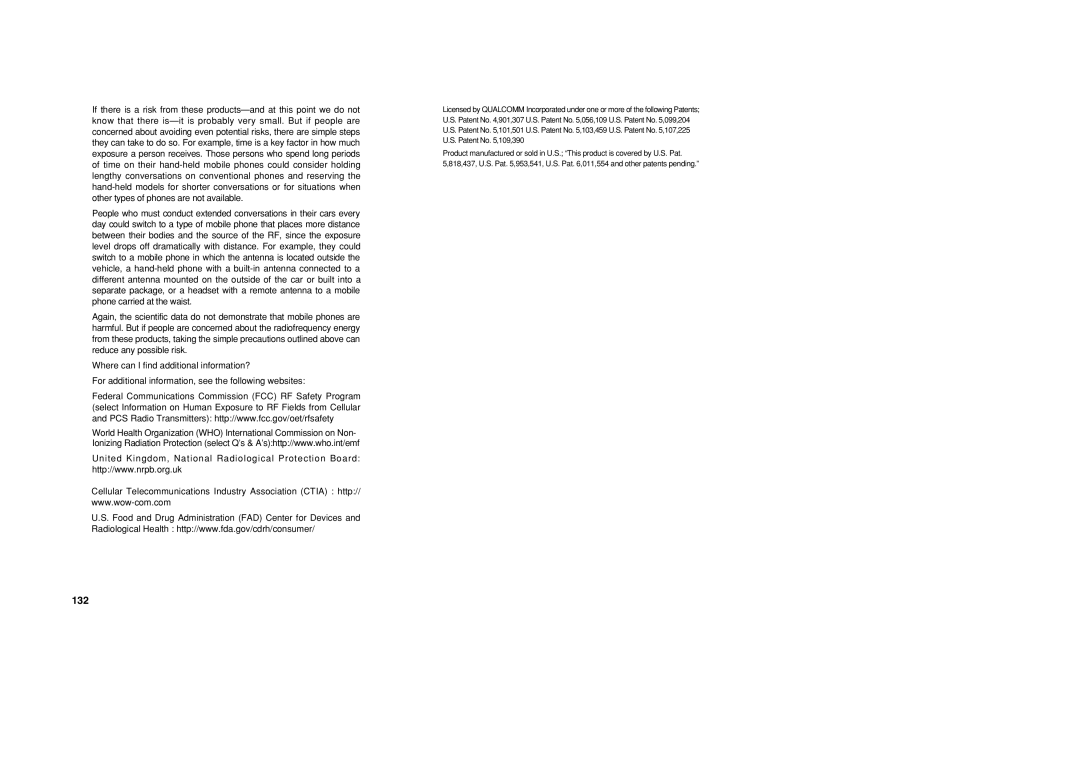Usuário do Manual
Limited Warranty Statement
Driver Safety Tips
Page
Page
Page
Subject
Introduction
Before You Start
Contents
MiniBrowser 110
Removing the Battery
Using the Battery Pack
Installing the Battery
Battery Charge Level
Using the Desktop Charger
Following shows key components of your mobile phone
Caring for the Battery
Phone components
Phone Overview
Soft Keys
Onscreen Icons
Press once to enter numbers
Changing Letter Case
Input mode
Examples Using T9 Text Input
Examples Using ABC Multi-tap Text Input
Using the Next Key
Fully extend the antenna for the best performance
Enter the phone number, with area code if needed
Correcting Dialing Mistakes
Call Waiting
Press to redial the last number in call history
Power Save Mode
Speed Dialing see Making a call from Phone Book on
Saving Numbers in Your Personal Phone Book
Confirmation prompt Saved! Thanks! displays on the phone
Home, Office, Mobile, Pager Data /Fax and E-mail using
Press Find Name
Select the number you want by using , then press
Pressing
Dialing from a Memory Location
Two-Touch Speed Dialing This feature enables
Dialing from a Memory List
Press Time Pause
Mobile, Pager, Data / Fax or E-mail using
Ring Sound Menu
Press to go through the list of menu features
Sound Menu
Press Ring Sound
Key Tone Menu
Ring Type Menu
Ring & Vib Vol. Menu
Escalating Vol. Menu
Key Volume Menu
Ear Volume Menu
Display Menu Press one time Backlight Menu Press one time
Alert tone notifies the user when the call is connected
Press Backlight
Press Language Set English/ Spanish with or
Press Contrast
Press Theme
Contrast Menu Press one time
Press My Phone #
Press Data Setting and then Data/Fax
Press Version
Version Menu Press one time
Data Baud Menu Press two times
Date Baud
Auto Answer
Select an option and press Soft Key
Press Audio AGC
Press One-Touch
Press Voice Privacy
Auto NAM
System Sel
Set NAM
Force Call
Serving Sys Menu Press three times
TTY Mode
Serving Sys
Emergency #
New Lock Code
New Lock Code Menu Press four times
To find phone numbers you have stored in the Phone Book
Find Entry PIM
Press Find Entry
Add Entry PIM
Select the desired phone number type using
Find Name PIM
Press Add Entry
Select Call HISTORY, Outgoing
Find Email PIM
Press Find Email
Select Call HISTORY, Incoming
Select Call HISTORY, Missed
If you want to see the calender, press in standby mode
Scheduler PIM Press two times
Select SCHEDULER, View Daily
View Daily PIM
Select SCHEDULER, Add Event
Select SCHEDULER, Erase All
Erase Old PIM
Select SCHEDULER, View All
Select SCHEDULER, Erase Old
Comanche PIM Press four times
Wake UP PIM Press three times
Game PIM Press four times
By destroying the building at the end of the stage
Moves to selected menus screen
Moves Comanche one tile up. Moves Comanche one tile down
Switches between lowercase and uppercase characters
Input name completed
HIT
Calculator PIM Press five times
Volume and Backlight
Setting PIM Press four times
Number by pressing during a message check
Types of Menu
New Message Alert
Out of Memory Warning
Voice
Send Message
Menu
Select Send Msg
When all fields are entered, press To send the message
Inbox
Erase Delete the selected message
Outbox
Allows you to retransmit the selected message
Erase Outbox
Erase Msgs
Erase Inbox
Erase All
Setting
Key Tone During a call Menu
Mute During a call Menu
Memo During a call Menu
Voice Privacy During a call Menu
To start the MiniBrowser
Browser Start
Browser Msg
Accessing the MiniBrowser
Overview
Will also move the cursor
Navigating through the Browser
Navigation keys
Press Side Keys to move up and down a whole screen
View Browser Menu
Entering Text, Numbers, or Symbols
Using Bookmarks
Soft Keys
To create a Bookmark
Finding a Bookmark
Desktop Charger
Standard battery and Extended battery are available
Travel Charger
Hands-Free Car Kit Portable
Hands-Free Car kit Installed
Cigarette Lighter Charger
Data Cable Kit
122
Safety Information
Exposure to Radio Frequency Signal
For Vehicles Equipped with an Air Bag
Efficient Phone Operation Normal Position
Tips on Efficient Operation
Batteries
Vehicles
FDA Consumer Update
Other Medical Devices
Posted Facilities
128 129
130 131
132

